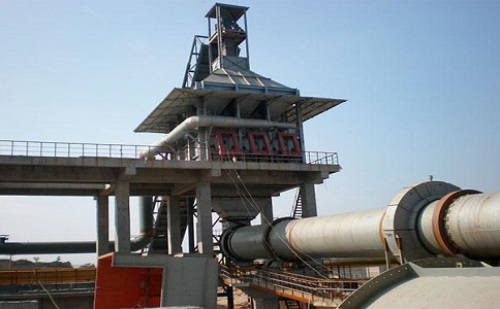Introduction: The production of a rotary kiln is a long-established product that can be used by the family. The following brief introduction to the development and change of rotary kiln.

Since the rotary kiln was used as cement high-temperature calcination reaction equipment in 1885, its specifications have undergone a process of development from thinning to thickening, lengthening, and then lengthening and shortening. The rotary kiln that calcined the cement clinker appeared with the dry process. However, because the cement production calcining process was not yet mature, there were many problems that could not be solved. The biggest problem was the poor uniformity of the raw materials. Due to this problem, the quality of the cement clinker produced by the dry process at that time was extremely poor and the stability was not good. To this end, a water-added pulping method (ie, wet method) was adopted, followed by a drying, preheating, and calcining process, which greatly improved the quality of cement clinker. Subsequently, the cement production equipment manufacturers vigorously promoted the wet production process of cement clinker, and gradually developed toward large-scale. Until the diameter of the kiln cylinder reaches 7.6 and the length reaches 230m, there are up to 6 support piers for the rotary kiln, which results in the design of the support device of the rotary kiln shell, the distribution of the force after deformation, and the stability of the refractory material in the kiln. The adverse effects have led to a significant reduction in the operating rate of large-scale cement. Around 1950, with the advent of the preheater technology and continuous improvement, coupled with the improvement and application of the raw material dry pre-homogenization technology, the rotary kiln characterized by dry production has returned to his original development. Track up.
The preheater completes a large number of heat exchanges and partial material decomposition tasks, greatly shortens the length of the rotary kiln, and at the same time lowers the heat loss compared to the wet method kiln, which greatly improves the heat load and operating conditions of the rotary kiln. Larger industrialization provides reliable technical support. Especially the decomposing technologies outside the kiln after the 1970s, plus the continuous optimization and improvement of the structure and operating parameters of preheaters and precalciners in the past 20 years, the constant emergence of new and efficient grate coolers, rational design and control With the introduction and application of flexible multi-channel burners, the function of the cement rotary kiln has undergone a qualitative change, achieving a leap in the cement industry technology.
Automatic Reagent Feeder is an automatic dosing device controlled by PLC. It is mainly used in mineral processing, hydrometallurgy, coal preparation, petroleum, chemical industry, water treatment and other industries. Automatic Reagent Feeder can add a variety of chemical agents on the basic of the requirements of the industrial production process. The process technology is accurately controlled and the quality of the product is improved effectively.
Automatic Dosing Unit,Chemical Dosing Unit,Auto Dosing Pump,Automatic Dosing Equipment
Dandong Dongfang Measurement & Control Technology Co., Ltd. , https://www.dfmc-tec.com